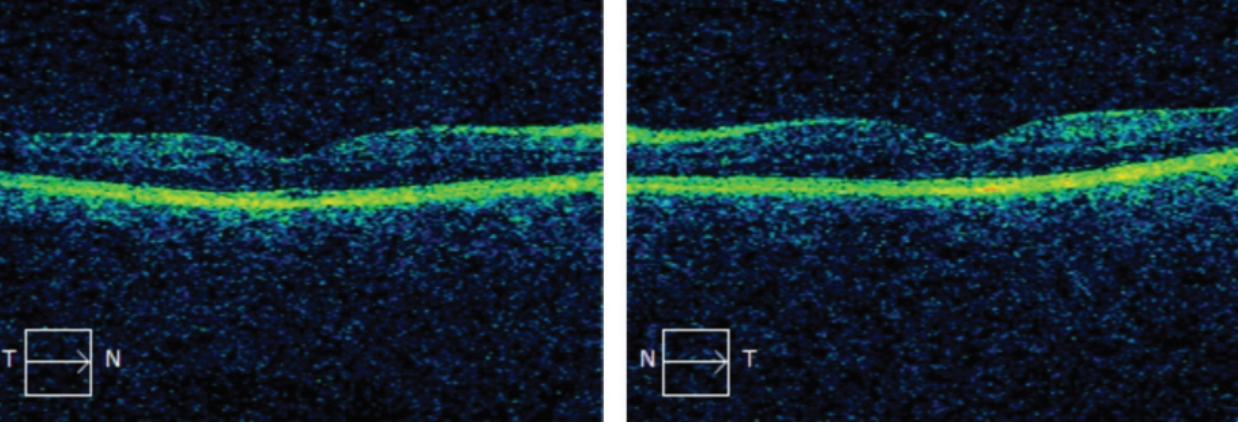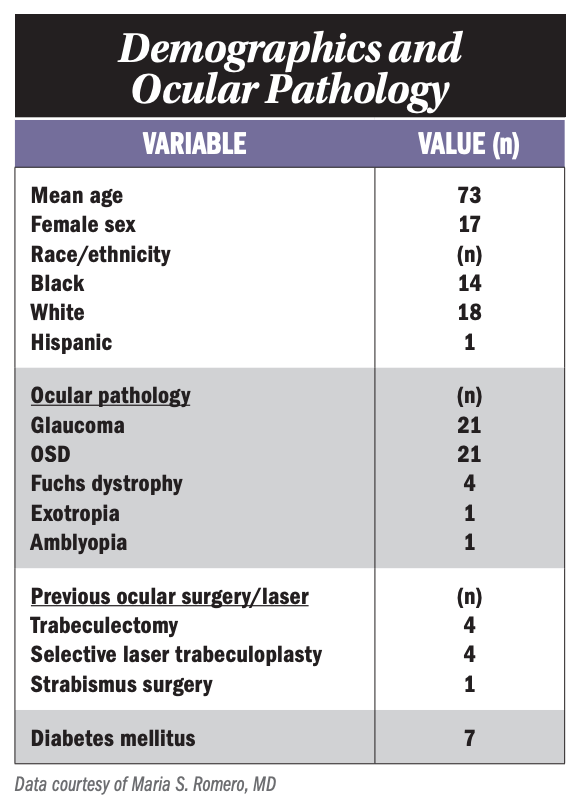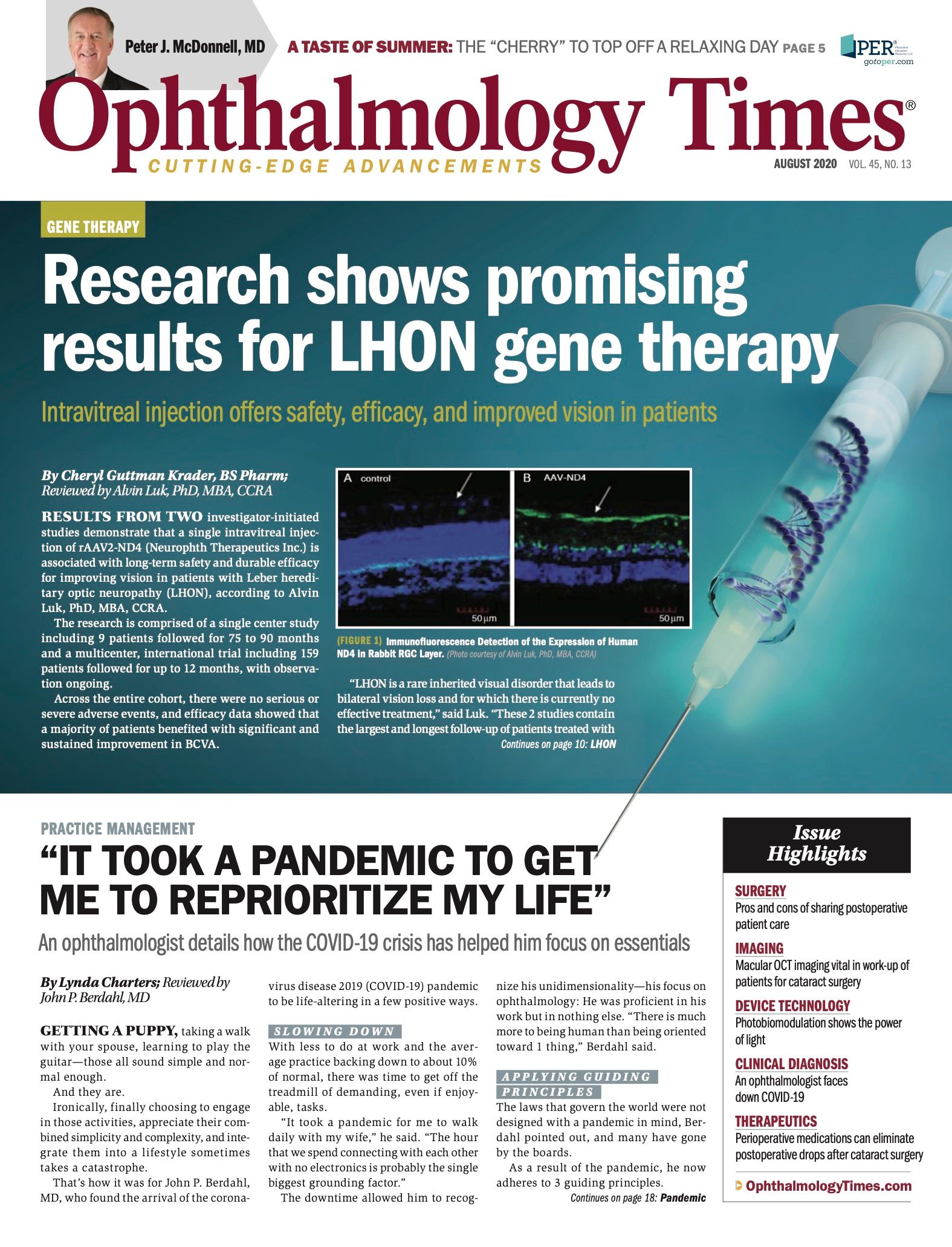Publication
Article
Digital Edition
Macular OCT imaging is vital in work-up of cataract surgery patients
Author(s):
Investigators find value in screening for macular disease in preoperative evaluation
Figure 1: Horizontal Scans Show the Epirretinal Membrane. (Photos courtesy of Maria S. Romero, MD)

Investigators find value in screening for macular disease in preoperative evaluation
This article was reviewed by Maria S. Romero, MD
Findings from a review of a prospective consecutive surgical series of patients reinforce the value of incorporating optical coherence tomography (OCT) to screen for macular disease in the preoperative evaluation of candidates for cataract surgery.
Related: ASCRS 2020: Assessing effectiveness of intracameral phenylephrine/ketorolac post-cataract surgery
The research was presented by Maria S. Romero, MD, at the 2020 American Society of Cataract and Refractive Surgery (ASCRS) virtual annual meeting.
According to Romero, findings from imaging performed with a spectral-domain (SD)-OCT platform showed that previously undiagnosed macular abnormalities were common among patients who had been referred to her for cataract surgery.
Patients with abnormal findings on SD-OCT were referred to a retina specialist prior to cataract surgery for further evaluation and treatment.
Evaluations performed at 1 and 3 months after cataract surgery showed that good visual outcomes were achieved overall, and there was no evidence that any existing vitreomacular disease worsened after cataract surgery.
“Macular disease can compromise the visual acuity, not only quantitatively but also [in terms of] the quality of vision, by decreasing contrast sensitivity, leading to patient dissatisfaction after cataract surgery,” said Romero, who is the medical director at Precision Eye Care in Baltimore, Maryland.
Related: Topical moxifloxacin: Best choice before cataract surgery?
“In most of the cases in this study, the macular disease revealed by OCT imaging was subtle and overlooked by the referring providers, [who were] performing a standard clinical exam through the cataractous lens,” she said. “These findings are very important not only for advising the patients about intraocular lens technology that would benefit and improve their quality of life and to set appropriate outcome expectations, but also for proper monitoring for progression of the macular disease per se and prevention of loss of vision.”
The study included 42 consecutive eyes of 33 patients. Patients with any known retinal or
macular pathology or prior history of retinal surgery or laser surgery were excluded.

Romero performed all the cataract surgeries, and the patients received a standard postoperative management regimen for preventing infection and treating pain and inflammation.
The patients in the series had a mean age of 73 years. Glaucoma was present in 21 eyes, and trabeculectomy and selective laser trabeculoplasty had each been performed in 4 eyes.
Ocular surface disease was also common (21 eyes), 1 eye had a history of strabismus surgery, and high myopia was present in 2 eyes.
Related: 3D cataract surgery: Keeping the eye in focus
Of the 42 eyes, 27 (64%) were found on the SD-OCT imaging to have a previously undiagnosed macular abnormality.
An epiretinal membrane was the most common pathology followed by posterior vitreous detachment, drusen, macular hole, retinal pigment epithelium hypertrophy, and vitreomacular traction.
“The relatively high incidence of vitreomacular disease in this series of patients is likely explained by the high prevalence of ocular comorbidities, including glaucoma,” Romero said.
Among eyes found to have a macular abnormality on SD-OCT, mean BCVA improved from 0.31 logMAR preoperatively to 0.07 logMAR at 3 months following surgery.
“Thepreoperative and postoperative visual acuity in the study was impacted by the pre-existing conditions,” Romero said.
Romero reported that a change in the SD-OCT from baseline to 3 months after surgery indicating worsening or new onset of macular pathology was found in only 1 eye, which developed cystoid macular edema after cataract surgery in a patient with glaucoma and uncontrolled diabetes.
Related: Dropless, hands-free regimen key for patients
According to Romero, a limitation was that the study included a relatively small number of patients.
Additionally, Romero said she observed that not all surgeons have access to OCT within their practice setting because of financial limitations in the developing world or institutional constraints. In those cases, she recommends that surgeons work closely with their retinal colleagues.
See more ASCRS 2020 coverage here
Read more by Cheryl Guttman Krader
---
Maria S. Romero, MD
e: msromemd@gmail.com
Dr. Romero has no relevant financial interests to disclose

Newsletter
Don’t miss out—get Ophthalmology Times updates on the latest clinical advancements and expert interviews, straight to your inbox.




